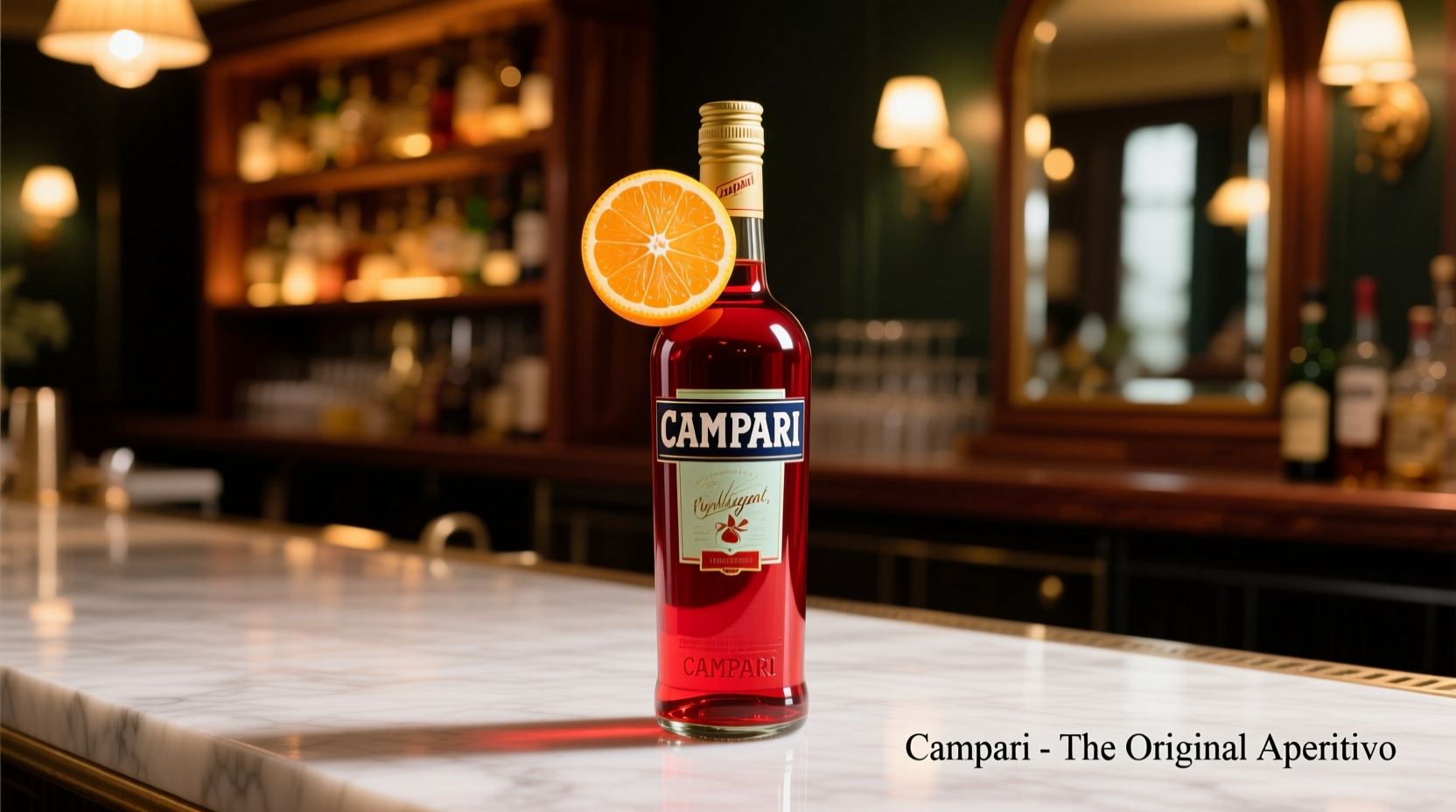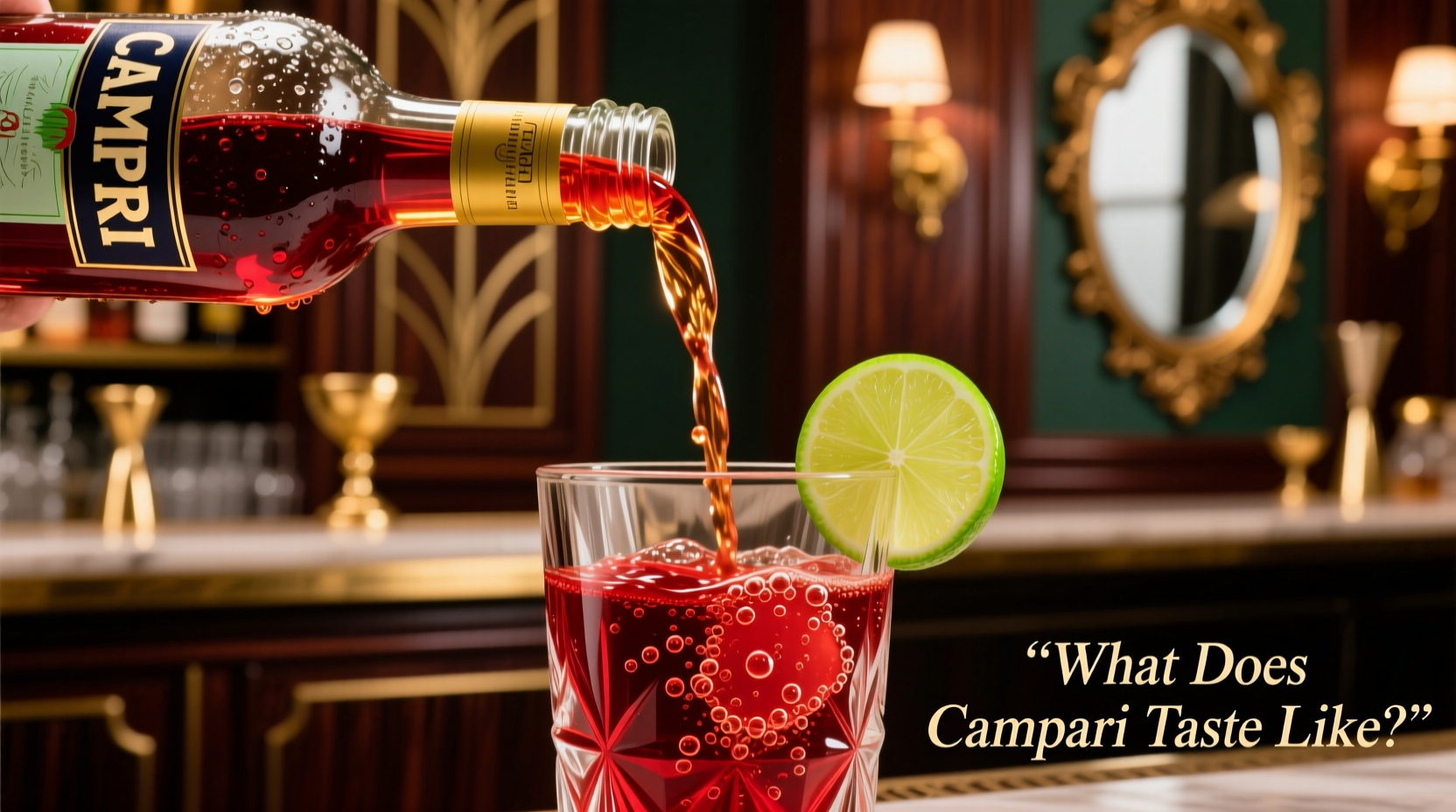If you've ever wondered what Campari tastes like, you're experiencing one of the most polarizing flavor profiles in the spirits world. This iconic Italian aperitif immediately strikes the palate with pronounced bitterness balanced by underlying sweetness and citrus elements. Understanding Campari's complex taste requires examining its botanical composition, historical context, and how your tasting experience evolves over time.
The Core Flavor Profile: More Than Just Bitter
While Campari's bitterness often dominates first impressions, its flavor profile reveals multiple dimensions as you continue tasting. The bitterness primarily comes from centaury, a flowering plant in the gentian family, working in concert with quinine and other botanicals. This bitterness isn't harsh but rather refined and complex, serving as the foundation for other flavor elements to emerge.
After the initial bitter wave, you'll detect:
- Citrus elements - Particularly bitter orange peel, not the sweet orange associated with many liqueurs
- Herbal notes - Subtle hints of rhubarb, wormwood, and ginseng
- Floral undertones - Delicate rose and geranium notes from the secret botanical blend
- Subtle sweetness - Not sugar-forward like many modern liqueurs, but enough to balance the bitterness
How Campari's Taste Evolves: A Tasting Timeline
Unlike simpler spirits, Campari's flavor profile transforms as it interacts with your palate. This timeline reflects what professional tasters consistently report when evaluating Campari:
| Timeframe | Primary Sensations | Secondary Notes |
|---|---|---|
| 0-5 seconds | Immediate bitter impact | Sharp citrus peel, alcohol warmth |
| 5-15 seconds | Bitterness mellowing | Rhubarb, herbal complexity emerging |
| 15-30 seconds | Balance developing | Subtle berry notes, floral undertones |
| 30+ seconds | Long bitter finish | Warmth lingering with citrus回味 |
This evolution explains why Campari is often described as an acquired taste—your palate needs time to appreciate how the initial bitterness transforms into a complex, balanced experience. According to sensory research published by the International Society of Beverage Technologists, the human palate typically requires 3-5 exposures to fully appreciate bitter-forward beverages like Campari.
Campari vs. Similar Spirits: Understanding the Differences
Many people confuse Campari with other red Italian liqueurs, but the taste differences are significant. This comparison helps clarify what makes Campari unique:
| Spirit | Bitterness Level | Sweetness | Alcohol Content | Key Flavor Notes |
|---|---|---|---|---|
| Campari | High | Low | 20.5-28.5% | Bitter orange, rhubarb, herbal complexity |
| Aperol | Low | High | 11% | Sweet orange, vanilla, hints of gentian |
| Cynar | Medium | Medium | 16.5% | Artichoke, caramel, mild bitterness |
| Contratto Bitter | Medium-High | Medium | 25% | More pronounced citrus, less herbal |
The Campari Company's official documentation confirms that their proprietary blend contains over 60 botanicals, though the exact recipe remains a closely guarded secret. This complexity creates a flavor profile that's difficult to replicate, contributing to Campari's distinctive taste that has remained consistent since Gaspare Campari created the formula in 1860.
Context Matters: When Campari's Flavor Shines
Campari's taste profile works best in specific contexts that complement rather than compete with its distinctive characteristics:
- As an aperitif before meals - The bitterness stimulates digestive enzymes, preparing your palate for food
- Diluted with soda water - Water opens up the flavor profile, reducing alcohol intensity while maintaining complexity
- In balanced cocktails - The Negroni (equal parts Campari, gin, and sweet vermouth) showcases how Campari's bitterness creates harmony
- With citrus garnishes - Orange slices enhance Campari's natural citrus notes rather than competing with them
According to cocktail historian David Wondrich's research documented in Imbibe!, Campari's flavor profile was specifically designed to work as a digestive aid, which explains why it performs best in contexts that support this original purpose. When consumed neat by those unaccustomed to bitter flavors, Campari can seem overwhelmingly intense—but when properly contextualized, its complexity becomes apparent.
Practical Tasting Advice for First-Time Drinkers
If you're trying Campari for the first time, approach it strategically to maximize your appreciation of its flavor profile:
- Start diluted - Mix 1 part Campari with 2-3 parts soda water over ice to soften the initial bitterness
- Use proper glassware - A wine glass or balloon glass allows the aromas to develop properly
- Add citrus - A generous orange slice complements rather than masks Campari's natural flavor profile
- Chill slightly - Serve between 8-12°C (46-54°F) to moderate the alcohol perception
- Take small sips - Allow time between sips for your palate to adjust to the bitterness
Many first-time tasters make the mistake of expecting Campari to taste like sweeter modern liqueurs. Instead, approach it with the same mindset you would a fine espresso or dark chocolate—appreciating how bitterness can create complexity rather than simply being unpleasant. The Difford's Guide to Spirits notes that most people develop a preference for Campari after 3-5 properly prepared servings.

How Production Methods Shape Campari's Taste
Campari's distinctive flavor remains consistent across markets despite varying alcohol content (20.5% in Europe, 24% in the US, 28.5% elsewhere) because of strict production protocols. The maceration process—where botanicals steep in alcohol for several days—extracts flavors differently than distillation would, preserving more of the raw plant characteristics.
Unlike many modern spirits, Campari uses natural coloring from carmine (crushed cochineal insects) in some markets, though this doesn't affect the taste. The bitterness comes primarily from gentian root and quinine, with supporting notes from rhubarb, juniper, and a secret blend of Mediterranean herbs. This careful balance explains why Campari maintains its distinctive profile whether served neat, on the rocks, or in cocktails.
Frequently Asked Questions
Here are answers to common questions about Campari's taste profile:
Is Campari supposed to taste bitter?
Yes, bitterness is Campari's defining characteristic. The bitterness comes from gentian root, quinine, and other botanicals in its secret recipe. This bitterness is intentional and balanced with subtle sweetness and citrus notes. While intense at first, most people learn to appreciate this bitterness as complexity rather than unpleasantness.
Why does Campari taste different in cocktails than neat?
When mixed in cocktails, Campari's intense bitterness becomes balanced by other ingredients. In a Negroni, sweet vermouth counteracts the bitterness while gin provides herbal complexity that complements Campari's profile. Dilution from ice also softens the alcohol perception, allowing more subtle flavor notes to emerge that might be overwhelmed when drinking Campari neat.
How does Campari compare to Aperol in taste?
Campari is significantly more bitter and less sweet than Aperol, with nearly double the alcohol content. While both feature orange notes, Campari uses bitter orange peel whereas Aperol uses sweet orange. Campari has greater herbal complexity with prominent rhubarb and gentian notes, while Aperol emphasizes vanilla and蜂蜜-like sweetness. They're often confused but create dramatically different drinking experiences.
Does Campari taste like other bitter liqueurs?
Campari shares bitterness with other amari (Italian bitter liqueurs) but has a distinctive profile. Compared to Averna or Cynar, Campari is less sweet and more citrus-forward. Unlike Fernet-Branca's medicinal intensity, Campari offers brighter citrus notes. Its specific balance of bitter orange, rhubarb, and herbal notes creates a signature profile that's been consistent since 1860, making it recognizable even among similar bitter liqueurs.
Why do some people say Campari tastes like medicine?
The quinine and gentian in Campari create bitterness reminiscent of certain medicines, particularly older formulations that used similar bittering agents. This medicinal association is strongest for those unaccustomed to bitter flavors. However, Campari's complexity—with its citrus, herbal, and subtle sweet elements—creates a more nuanced experience than actual medicine. As your palate adjusts, the medicinal note typically gives way to appreciation of the full flavor profile.











 浙公网安备
33010002000092号
浙公网安备
33010002000092号 浙B2-20120091-4
浙B2-20120091-4